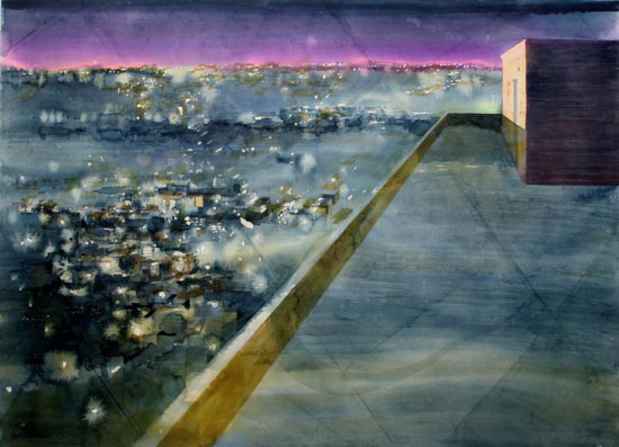"Discerning Form" Exhibition
Aicon Gallery

This event has ended.
'Discerning Form' presents the works of Krishna Reddy, Ganesh Haloi, Indrapramit Roy and Nitin Mukul. This cross-generational show explores the ways in which modern and contemporary Indian artists have used abstraction in conjunction or opposition to figuration in order to develop new ways of articulating their surroundings.
The role of abstraction in Indian modern and contemporary art is significantly different from its role in Western art. In the West, abstract art developed from the Post-Impressionist and Cubist break with figurative representation and developed through the work of artists such as Malevich, Mondrian and Kandinsky, arguably reaching its high-point in the work of the New York Abstract Expressionists. However, it is this strong link between abstraction and the narratives of Western modernist progression that led Indian artists to question exactly what role abstraction could play in their works. Some were openly hostile to abstraction. For instance, M.F.Husain rhetorically asked "How can I go abstract when there are 600 million people around me in India?" Other artists, such as Vasudeo Gaitonde, J.Swaminanthan and Ram Kumar, along with the artists in this show, experimented with abstraction but often attempted to do so on their own terms, rather than simply following movements in Europe and North America.
Krishna Reddy was born in Andhra Pradesh in 1925 and developed a transcendental, semi-abstracted style through his experimentations with graphic arts. This was in part due to his personal interest in spirituality, but also the result of technical experimentation; most notably, devising a method to print multiple colors from a single plate, which resulted in exuberantly colored printed works.
Born in Jamalpur, Mymensingh (now in Bangladesh) in 1926, Ganesh Haloi progressed from early works that were recognizably landscapes through a process of abstraction that was allied to a very personal vision. Early works contained trees, water and fields, all of which over the years would be replaced by a vocabulary of dots, dashes and abstract brush strokes. Haloi's trajectory parallels that of Piet Mondrian, who also moved from recognizable landscapes to an abstract vocabulary where just trace remains gesture back towards the physical world.
Indrapramit Roy's work fuses figurative, recognizable elements with fields of color and the flattened picture plane associated with abstraction. His merging of the figurative with the abstract is heightened by his recent use of watercolors to create areas of tonal modulation that seem to float above the narrative elements in the works. For the viewer, this varying of recognizable imagery with flattened picture planes creates a visual push and pull, as the recognizable dissolves into the semi-abstract.
Nitin Mukul's paintings combine process-oriented mark making with representational elements, creating an evocative interplay between the two. A densely layered picture surface results, where the figurative and the abstract sometimes converge. His practice has always been rooted in collage, and the resulting compositions have a tension that walks a fine line between balance and collapse, mirroring the fragile state of our world today. Mukul recasts and recombines ritual imagery, architectural remnants, and popular icons to give clues to a narrative which is often autobiographical. He utilizes a combination of traditional and unconventional materials, including black tea stain, which becomes conceptually charged through its relationship to the works underlying thematic content, namely the intersection of the social, the biological and the man-made as they relate to a rapidly evolving global culture.
[Image: Indrapramit Roy "THE TERRACE" (2006) Watercolor on paper, 40 x 56 in.]
Media
Schedule
from December 15, 2009 to January 23, 2010
Opening Reception on 2009-12-15 from 18:00 to 20:00